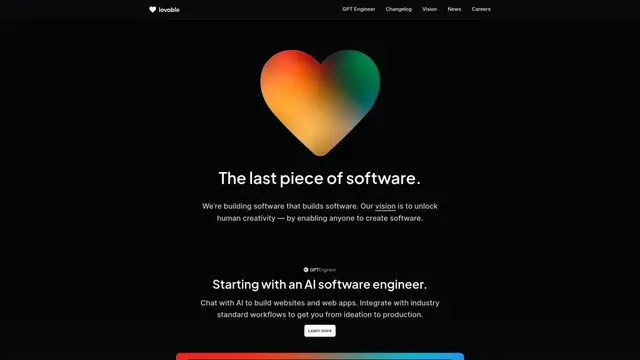
Reflex
Reflex is an open-source framework that enables developers to build full-stack, interactive web applications entirely in pure Python, eliminating the need for JavaScript or frontend development experience.
https://reflex.dev/?ref=producthunt

Product Information
Updated:Nov 9, 2025
What is Reflex
Reflex is a revolutionary web development framework that simplifies the process of building web applications by allowing developers to use Python for both frontend and backend development. It's designed to make web development more accessible to Python developers while maintaining the flexibility and performance of traditional web frameworks. The framework includes built-in components, state management, and deployment capabilities, making it suitable for everything from small data science projects to large-scale, multi-page web applications.
Key Features of Reflex
Reflex is an open-source full-stack web development framework that enables developers to build interactive, real-time web applications entirely in Python, without needing to write JavaScript. It compiles Python code into a React frontend and FastAPI backend, offering built-in state management, fast live reloads, and deployment tooling. The framework includes AI-powered scaffolding to accelerate development and supports seamless integration with various databases, APIs, and cloud platforms.
Pure Python Development: Build both frontend and backend using only Python, eliminating the need to learn JavaScript or manage separate codebases
AI-Powered Development: Transform plain English descriptions into production-ready Python web applications using Reflex Build's AI capabilities
Integrated State Management: Built-in state management system that automatically handles frontend-backend communication and UI updates
Flexible Deployment Options: Deploy through various platforms including Databricks, Snowflake, AWS, GCP, Azure, or use Reflex Cloud with single-command deployment
Use Cases of Reflex
Data Analytics Dashboards: Create interactive dashboards for visualizing and analyzing data, with real-time updates and integration with data sources
Internal Enterprise Tools: Build custom internal applications for business operations with authentication and authorization capabilities
AI/ML Applications: Develop web interfaces for machine learning models and AI applications with Python-native integration
Interactive Documentation: Convert Jupyter notebooks into production-ready, interactive web applications and documentation
Pros
Simplified development process with single language (Python)
Fast development cycle with AI assistance and live reloads
Extensive integration capabilities with Python libraries and external services
Cons
Occasional bugs in new releases that require patches
Limited third-party component ecosystem compared to mature frameworks
How to Use Reflex
Install Prerequisites: Ensure you have Python 3.10+ installed. It's recommended to create a virtual environment using venv, conda, or poetry. For macOS (Apple Silicon) users, install Rosetta 2 first.
Install Reflex: Install Reflex using pip: 'pip install reflex'
Initialize a New Project: Create a new Reflex project by running 'reflex init' in your desired directory. This will create the basic project structure with an rxconfig.py file.
Create State Class: Define your app's state by creating a class that inherits from rx.State. This class will contain your vars (variables that can change) and event handlers (functions that modify the vars).
Build UI Components: Create your user interface using Reflex's built-in components (60+ available). Components can be nested and styled using CSS. Use rx.hstack, rx.button, rx.heading etc. to build layouts.
Add Event Handlers: Define functions within your State class to handle user interactions. These event handlers can modify state vars and will automatically update the UI when called.
Run Development Server: Start your app in development mode by running 'reflex run'. This will start both the frontend and backend servers.
Test and Debug: Test your app's functionality. Reflex simulates real user interactions and helps debug the app. Use the development server to see changes in real-time.
Deploy Application: Deploy your app using 'reflex deploy'. You can deploy to various platforms including AWS, GCP, Azure, or use Reflex Cloud. The frontend can be hosted on CDNs like Vercel or Netlify.
Reflex FAQs
Reflex is a library that allows developers to build full-stack web applications using pure Python. It eliminates the need to create separate frontend and backend components.
Reflex Video
Popular Articles

FLUX.2 vs Nano Banana Pro in 2025: Which one do you prefer?
Nov 28, 2025

How to Use Nano Banana Pro Free in 2025 — Complete Guide (Step-by-Step)
Nov 26, 2025

Claude Opus 4.5: The Best Model for Coding, Agents & Computer Use (Full Guide)
Nov 26, 2025

Pixverse Promo Codes Free in 2025 and How to Redeem
Nov 26, 2025







